When you are in the market for a DSLR camera, you will come across the terms “Crop Sensor,” and “Full Frame.” You may be wondering what’s the difference between a full frame vs crop sensor camera? I am here to help compare the two types of cameras so you can fully understand what each one is capable of doing.
Table to Contents
- What is the difference between crop sensor and full frame cameras?
- Photo Examples of crop sensor vs full frame cameras
- Which is better full frame or crop sensor?
- Do professionals use crop sensor cameras?
- What is a disadvantage of a full frame sensor camera?
- What is an advantage of a crop sensor camera?
- Full frame vs crop sensor Camera FAQs
What is the difference between crop sensor and full frame cameras?
We’re going to start by going into the differences of crop sensors vs. full frame cameras. The main idea is that the full frame camera has a larger sensor and frame and can capture more in each image. Whereas the crop sensor will be a little bit smaller. I’m going to keep it simple. There are four main differences.
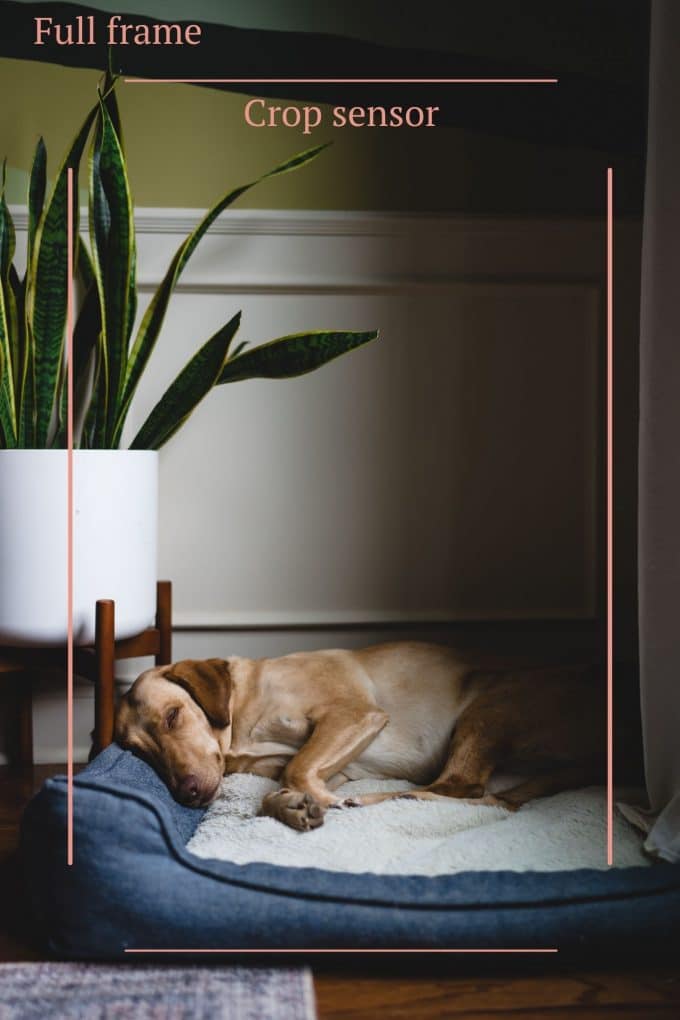
Higher ISO
First, full frames have higher ISO and can handle that ISO better in terms of grain. The camera itself can allow more light into it because the frame is larger.
Full frame cameras have better picture quality
Second, full frames produce better color and picture quality. You will typically spend a little more on a full frame camera and in return will recieve better picture quality.
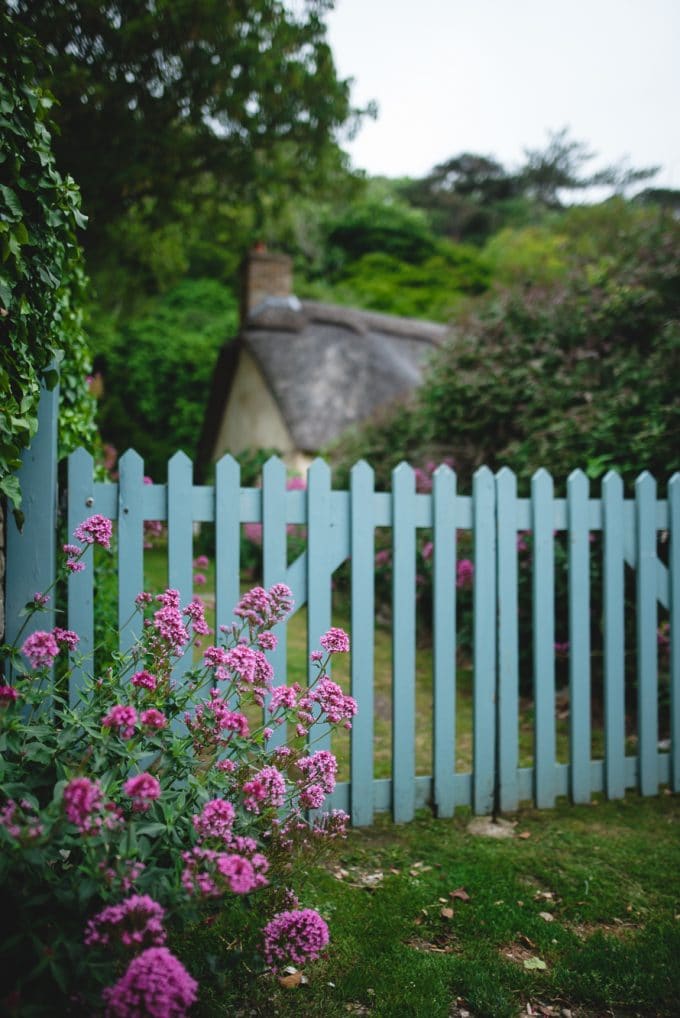
Focal lengths
Third, a crop sensor has a crop of 1.6x (Canon) or 1.5x (Nikon).
This means if you put a 50mm lens on a full frame, its focal length is 50mm. However, on a crop sensor the actual focal length for a 50mm is 80mm (Canon) or 75mm (Nikon). Wondering more about lenses check here for the Ultimate Lens Comparison for Finding Your Perfect Lens.
If you want to see what a 50mm lens would look like on a full frame but only have a crop sensor, check out the 35mm. Here is a full comparison on the 35mm vs the 50mm.
Depth of field
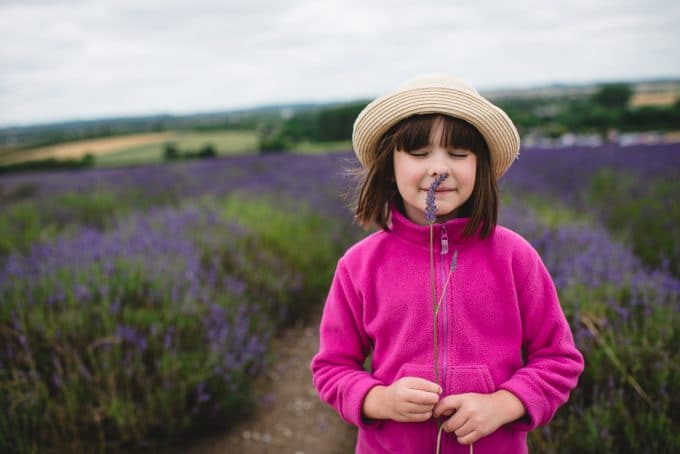
Lastly is DOF, although this is actually a myth, I am going to touch on this a bit when we get to the pictures.
Now let’s get to the photos. The photos were all shot from a tripod that never moved and with a model that was sitting in the same spot the whole time. This way you can really see the crop factor on each lens. Lastly, all photos were imported zeroed out and edited the exact same way. The only difference in editing was a few WB tweaks.
Photo examples of crop sensor vs full frame camera
Below you will see photos taken on a crop sensor camera, labeled 50D and a full frame camera labeled 5D. Each photo is taken using the same lens in the same spot but two different camera bodies.
24-70mm 2.8
First up is the 24-70mm lens. This is the only lens I felt a strong difference in color and image quality. I would not typically shoot with this lens for these types of shots but I wanted to give you a wide focal point to compare. Oh, and please excuse the foot chop. Whoops!
50mm 1.4
Moving onto the 50mm 1.4 . I can slightly tell the difference with color and image quality but honestly besides the crop they look extremely similar. You can see the DOF is exactly the same in both photos.
85mm 1.8
Last is the 85mm 1.8. Again there’s a slight difference in color and image quality but they both look fantastic to me. I love the DOF I acquired with both cameras and I would give both shots to my client.
Depth of Field myth
Now back to the DOF myth. The only time DOF applies is when you’re shooting the same photo at the same crop. So pictures 3 & 4 were both shot with my 85mm but with different camera bodies. I had to move in closer with my 5D to get a crop that would be similar to my 50D. Do you see the difference in the DOF in these shots? Again this is the only time it applies.
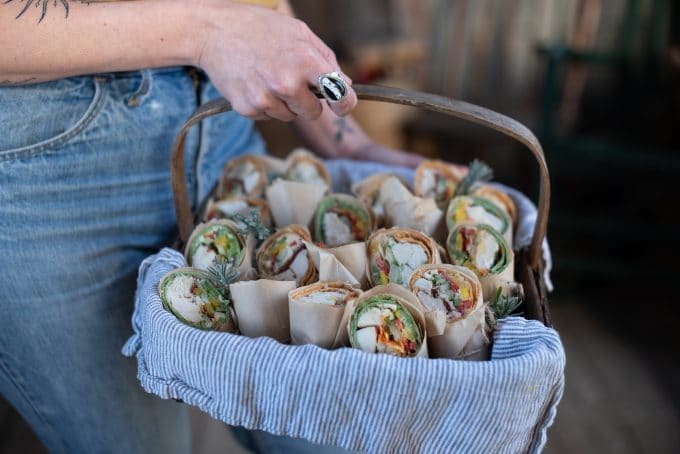
Which is better full frame or crop sensor?
Based off of the 4 comparisons above it is easy to say that the full frame camera is a better camera since it can use a higher ISO, has better photo quality, and captures more in each frame.
But whatever camera you have on you is your best option. So if you already have a crop sensor and you have mastered manual mode but you’re still not getting the photos you desire, then maybe consider upgrading.
All that said, if you have a crop sensor camera please do not think you can’t take incredible photos and capture all of your favorite memories. I even recommend upgrading your lens first!
Do professionals use crop sensor cameras?
There are many professional photographers who will use a crop sensor camera because that is what they already have. You might see this often with beginner photographers while they save up to invest in a full frame camera.
Or you will also see photographers investing in better lens since they hold their value way better than a camera body does.
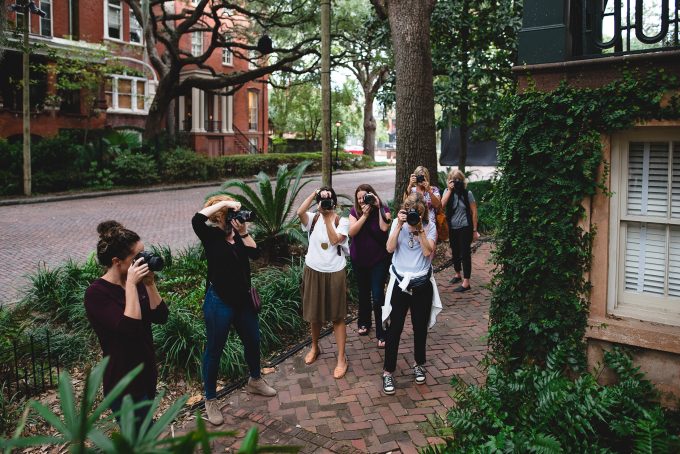
What is a disadvantage of a full frame sensor camera?
More expensive
Full frame cameras are going to cost more than a crop sensor camera. With the larger sensor and more capabilities to fit more in the frame, the cost of the camera will go up.
Larger body
The size and the weight of a full frame is noticibly bigger than the crop sensor body.
The full frame sensor is a larger sensor and all of the mechanics that go into that means the camera body must be bigger than the crop sensor camera body.
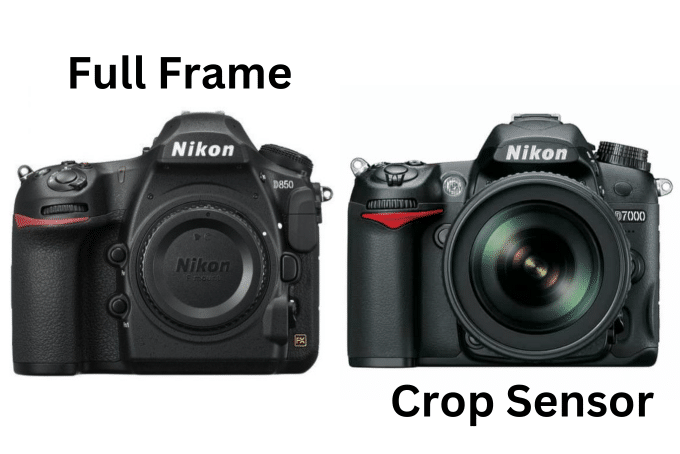
What is the advantage of crop sensor camera?
Smaller camera
The crop sensor camera is a physcially smaller camera. Up until the mirrorless camera came out, it would have bee the lightest option for a professional camera.
Less cost
Most beginner photographers start off with a crop sensor camera because it is cheaper. You can still get some amazing work out of a crop sensor camera and save money while doing it.
Cheaper lens
The lens tend to be less expensive as well since it is a smaller mount and frame.
Full Frame vs Crop Sensor Camera FAQs
The overall quality of a full frame camera is better since the sensor is larger. More light can be let in with it therefor more detail as well.
If you think you have maxed out your cameras abilities then yes I say you should look at an upgrade. Or if you are constantly feeling limited with space in your frame or with ISO abilities those would be good reasons to upgrade to a full frame camera.
Most mirrorless cameras are full frame cameras. You are able to find a crop sensor mirrorless camera but they are not near as common.

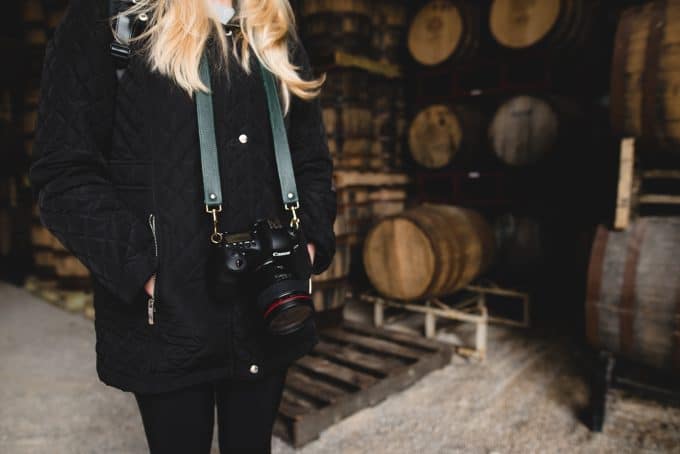
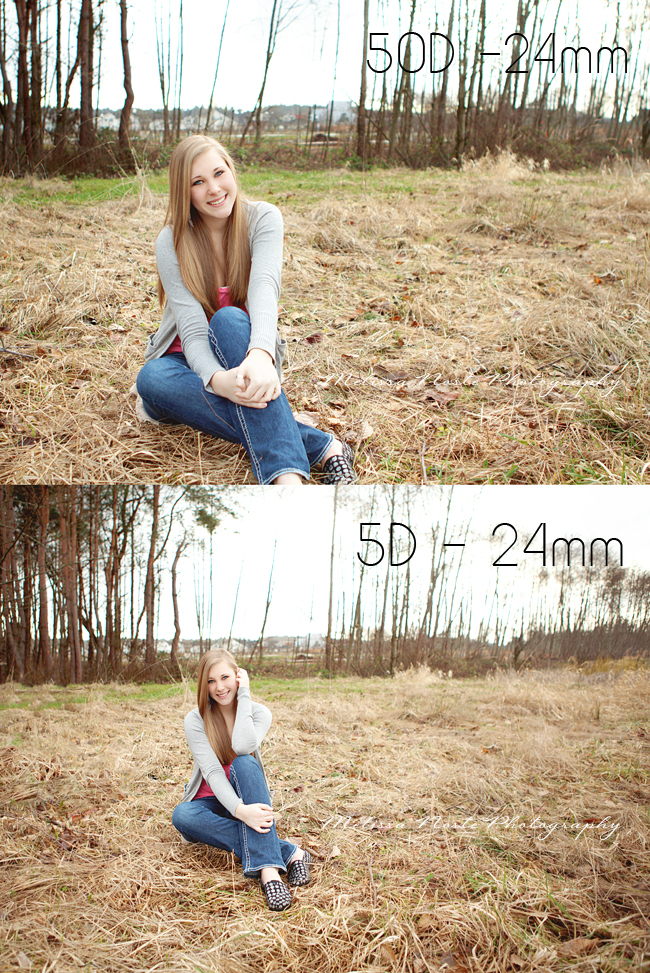
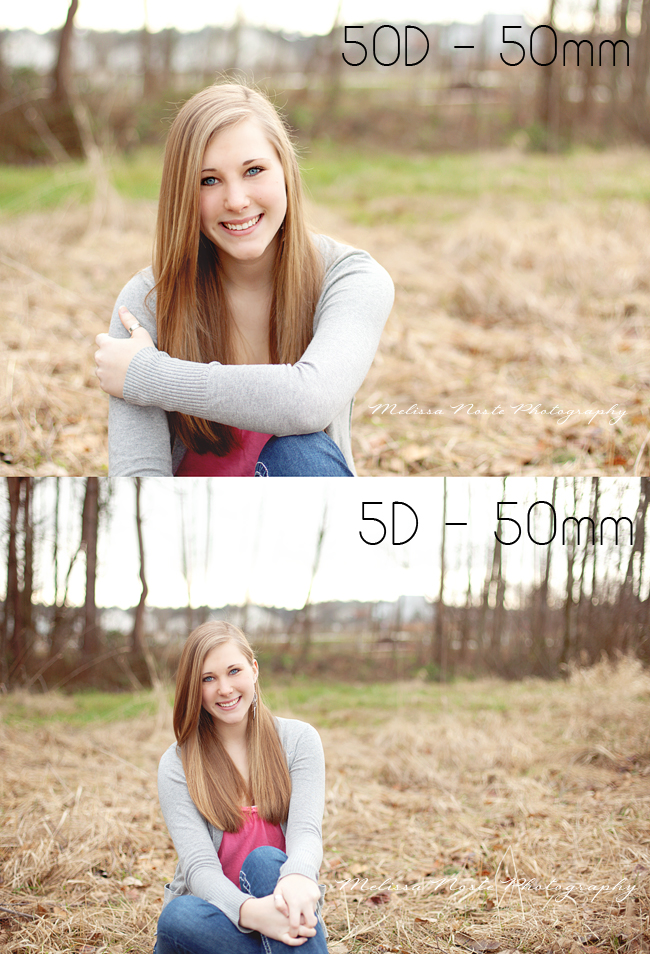
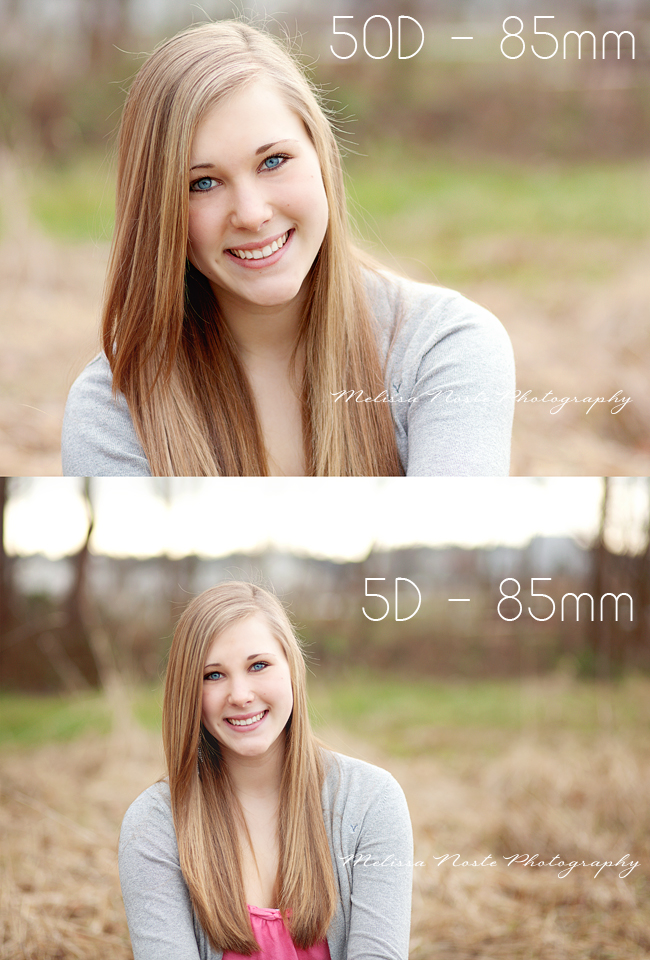





This is such a helpful post! I’ve seen a few things explaining this but it didn’t really “click” until now. Thanks for always breaking things down in such an easy to digest way.
Helpful post, thanks!
These comparisons are very helpful! Thank you.
My calculations show the 50mm being equivalent to 80mm on a Canon and 75mm on a Nikon. Am I incorrect?
You are 100% right!! Thank you for catching that, I went in and changed it. There is definitely a reason I didn’t major in math. ;) Glad you loved the comparisons.
Great post Melissa!!!!!! :) Beautiful work!
Thanks so much for such an informative post! I never understood the depth of field issue on a full frame camera vs cropped sensor camera until this post. The old saying that a picture is work 1000 words certainly applies here. Seeing photos with the same lens on different crop factor bodies for comparison is so helpful. I’m glad that I went ahead and got my 50mm 1.4 and 85mm 1.8 lenses to go with my trusty little Rebel.
Great article. I would like a full frame camera one day, but I absolutely love my 7D. I mean love. :) I think I could easily love a 5D Mark III, but not the price tag. Lol.
Thanks for this! I’ve been suffereing from camera envy lately and this really helps me to be complacent for awhile longer. I’ll save up for a new lens instead!
I am a math cripple.
There. I’ve said it.
Reading over and over again about a 1.5 factor on a crop v. full frame made absolutely no sense to me.
Your fist two pictures made it crystal clear.
Thank you.
Don’t worry Laureen! I know math and I aren’t friends. The way you figure it out is by taking the length of your camera and multiple it by 1.5. For example 50mm x 1.5 = 80mm. Hope that helps :O)
(Psst, Courtney, 50 x 1.5 = 75) :)
HA HA!!! I am way too pregnant and tired to do math! Thanks Marisa :O) ha ha
Thanks so much for doing this series! This is something that I have had trouble with understanding. You made it simple! I also have been contemplating getting a new lens or even a new body. Now I think I need to think about that a little more.
Hi Melissa! Providing us this useful information about camera lenses is really a big help. I will follow all the tips that you’ve shared with us here. Thanks for sharing your knowledge!
I currently own a Nikon D90 and one day hope to own a full frame camera. I’ve researched that DX lenses can not be used on full frame Nikons? So what would you do, continue buying DX lenses knowing they aren’t compatible or settle for the kit lenses knowing you’ll need to start from scratch once you can afford to make the purchase (possibly many years along)? I currently have the kit 25-80mm VR and 70-300mmVR but want to purchase an 85mm 1.4.
Love your website and the wealth of information it provides! I am considering buying a prime fixed lens, I own a cannon 60d, was looking at the 50mm but now wondering if I need the 35mm instead, is one better than the other? I like to shoot a lot of portraits and group shots of the kids and their friends. I also have the lens that came with the camera which is the 18-135mm. I am now confused which would be better? thank you!
*Excellent* article! This is the clearest explanation of the “shallow DOF advantage” of FF, I have ever seen, by far. I use a crop sensor now, and enjoy the extra “reach” it provides, for photograping my kids’ sporting activities. I see now that won’t be gaining any “shallow DOF advantage” by switching to FF, unless I can get closer to my subject (I can’t) or buy even longer fast glass (I can’t). I’ll stick with crop for now and spend any extra on glass. *Love* the shots using the 50D with the 50 and 85mm. Absolutely gorgeous. Thanks again for a wonderful article.
I have a question. I wanted to ask that are there any categories like lenses for full frame and lenses for crop frame?. also crop frame lens cannot get attached to fullframe mount or vice o versa ? please explain.
Hi There! Great article. I was hoping you could clarify something for me…I want to upgrade my kit lens (currently a Canon 18-55mm) to something that would work well for portraits. After reading the lens series, I believe I should be getting something somewhere in the range of 24-70mm but if I have a crop sensor in my camera, do I need to take this 1.6 multiplier into account and buy something lower? Then, if I would upgrade to a full-frame camera down the road, would this require me to need another lens for the same portraits due to no multiplier being added?
85mm is best for full-frame. But for a crop sensor you need something like 50mm. Try the 50mm f1.4 or f1.8. Perhaps the 40mm f2.8. These are just some cheaper lenses. There are plenty of options for much higher prices.
Very helpful post! Thank you for writing this up. I have to a question related to Leah’s and Cristi’s comments.
I understand that, on a FF camera, a 28mm lens will distort my subject a little (close-up shots), and a 135 mm lens will flatten my subject’s features. My question is: what determines this distorting or flattening effect? Is it angle of view or focal length?
In other words, if I use a crop sensor camera like Canon 70D, and a 28mm EF lens, will faces in close-up shots look slightly distorted, like what we expect a 28mm lens on a FF camera would do, or will the faces look more normal, like the ones taken with a (hypothetical) 44.8mm EF lens on a FF camera?
Thanks in advance!
Hey Han, Anytime you use a wide angle lens like the 28mm whether if it is on a crop sensor or full frame camera it will have some distortion. It has to do with the focal length and how close you are to your subject. If you are taking a headshot you will see a lot more distortion on your subject verses if you photograph them running through a field.
Thank you for your reply Courtney! That explains a lot. The comparison photos mean a lot to us with little experience.
What edit process you apply to the above images? I like the way the images are crystal clear. But i think there is some heavy editing involved. No matter what i do, it does not look that flat, sharp and crystal clear. Do you use some Photoshop actions?
You’re in certainty a superb web marketer. The web site reloading rate is amazing. Them form of can feel you are executing every distinctive strategy. Additionally, This belongings are usually mona lisa. you must have done a fantastic exercise within this issue!
“Lastly is DOF, although this is actually a myth, I am going to touch on this a bit when we get to the pictures. ”
That’s NOT true !!! Why do we get such bokeh only with DSLRs and not with point-and-shoot cameras? Because DSLR cameras have huge sensors compared to point-and-shoot cameras. Besides, it would be more helpful to see unprocessed images and not photo-shopped ones.
Fantastic beat ! I wish to apprentice at the same time as you amend your
site, how can i subscribe for a weblog site? The account helped me a appropriate deal.
I have been tiny bit familiar of this your broadcast offered vivid transparent concept
Hello there! I could have sworn I’ve been to this blog before but after browsing through some of the post I realized it’s
new to me. Nonetheless, I’m definitely delighted I found it and I’ll be bookmarking and checking back frequently!
Thank you for the auspicious writeup. It in reality was a amusement
account it. Glance complicated to more delivered agreeable from you!
However, how could we keep in touch?
This is very attention-grabbing, You’re an overly skilled blogger.
I’ve joined your feed and stay up for looking for extra of your fantastic post.
Also, I have shared your website in my social networks
I’m a senior in college and a total newby in the photography world…I have a Nikon D3100 that I bought with my high school graduation money and am looking to get new lens and upgrade from my original kit lens. I basically taught myself how to use it and am going back and trying to learn the names and techniques that I kind of already figured out without knowing it, so I can be a bit more precise when taking pictures now. The kit lens I have on there right now says that it’s DX, which from another post I saw is a crop-sensor lens? Does this mean I have to get a crop sensor lens for my next one (I’m looking at the 50mm f/1.8)? Any help anyone can give would be great! Thanks!!
Hi, thanks for the blog, its great, I am still missing something small though and I wonder if you could help. I have a canon 50mm 1.8 on a crop sensor. I need to change lens though as when i take photos indoor i just don’t have the room in my home to step back to get everything I may want in the frame. So I am thinking that I might need a 28mm or 40mm lens, is that correct? Can anyone help?
Wow, This is exactly what I needed to understand full frame vs crop. For the longest time I could see the difference in colors and image quality of full frame cameras, I finally get it. I absolutely love your blog. They way things are explained is just so easy to understand and follow!
What was the distance between the subject and camera in 50mm 1.4?
This excellent website definitely has all the info I wanted concerning this subject and didn’t know who to ask.
Maglia Inter Bambino
Thank you so very much for this!! I’m pursuing newborn photography and people often say use a 50mm but i have a Nikon d3200(crop) and i have the hardest time getting their little bodies in the frame…now i understand why! it doesn’t help my studio is on the small side also….This post is perfect!!
What about when you have an APSC lens on an APSC camera? Theoretically, say if I put a 35mm APSC lens like the (Meike 35mm F1.7 or the Fujian 35mm F1.7 cctv lens) on a 50D(APSC cameras), would the field of view be the same as full-frame 35mm lens on a full frame camera?
This has been one of the most helpful articles I’ve read in a while
I’m a professional photographer and because I didn’t want a heavy camera I went for the Nikon d7000 series. I read one of your articles and decided I needed an 85mm for portraits. The guy in the camera store explained what a crop sensor was and since I have a 50mm and 35mm I saved a lot of money. I mostly use a Tamron 17-70 but now I’ll use the 50 more often for portraits.